|
|
Post by Prince Hal on Feb 15, 2019 7:41:52 GMT -5
Oh, yes, of course. Esquire was actually larger than today’s standard magazine size in 1972. I wonder if it might have been one of a series of mock-ups of old magazine covers. |
|
|
|
Post by Mister Spaceman on Feb 15, 2019 16:38:37 GMT -5
Oh, yes, of course. Esquire was actually larger than today’s standard magazine size in 1972. I wonder if it might have been one of a series of mock-ups of old magazine covers.  |
|
|
|
Post by Deleted on Feb 20, 2019 13:39:13 GMT -5
And now probably the most well known story in this run: 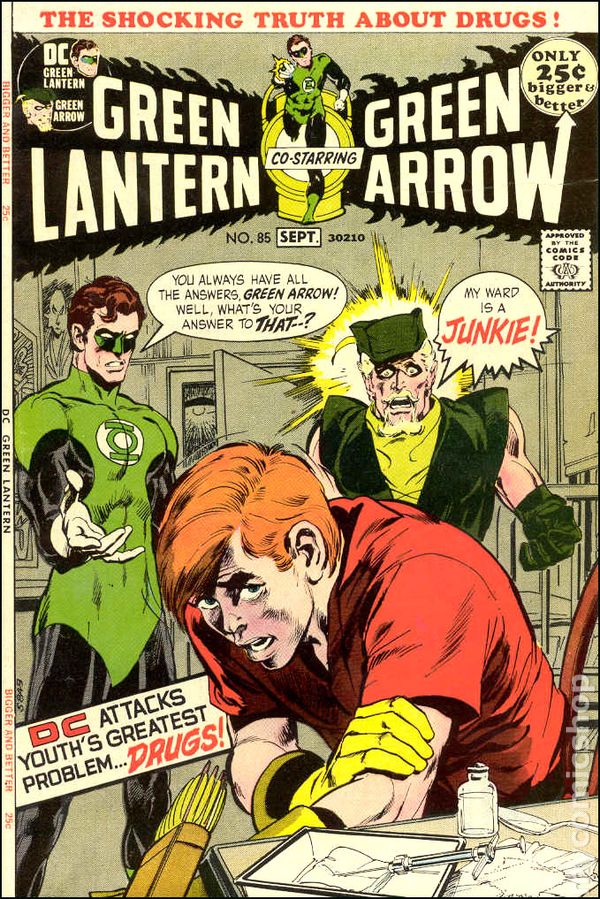 By Denny O'Neil and Neal Adams. Oliver is mugged and shot with an arrow from a crossbow. He discovers the arrow is one of his own arrows. Green Arrow calls Green Lantern. Together they find the muggers who are drug addicts. They also find Roy Harper, who GA assumes has been working undercover. Later GL & GA trail the addicts to find their dealer. However the dealers knock out GL and GA and inject them with drugs. Roy arrives in time to get GL & GA home to come down from the drugs. There Roy explains why someone may turn to drugs, but Green Arrow doesn't understand or agree with Roy. Later Ollie finds Roy getting ready to shoot up.  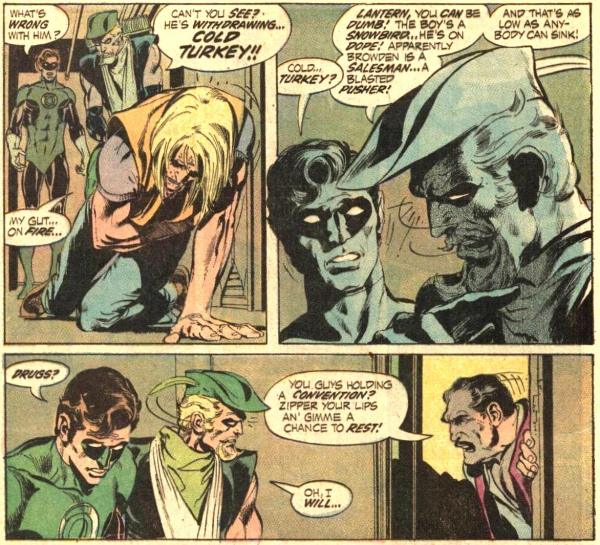 I assume DC and the creators knew this would be a "special" issue. I feel O'Neil and Adams went the extra mile to produce a great looking product and provide some answers. This story was a bit more balanced and realistic than their previous stories. I feel this story is extremely relevant today and holds up better than any of their other stories in this run. Next Part 2 in GL/GA #86. |
|
|
|
Post by Slam_Bradley on Feb 20, 2019 13:48:12 GMT -5
|
|
|
|
Post by Deleted on Feb 20, 2019 14:08:20 GMT -5
 By Denny O'Neil and Neal Adams. Inks by Dick Giordano. Green Arrow blames everyone but himself for Roy's problems. He decides to take out the drug dealers. Meanwhile Green Lantern feels something is wrong with Roy and returns to Oliver's apt. There he finds Roy curled up in the basement coming off his high. GL takes Roy to Dinah's to get him help and tries to find GA. However GA has been overcome by the drug dealers and tossed into the harbor to drown. But GA escapes with one of his trick arrows just as GL arrives. Together the two trace the drugs back to their source and put the place out of business. One week later all of them gather at the funeral of an addict that overdosed that Roy knew. Dinah had helped Roy get clean by going cold turkey. When Ollie congratulates him Roy punches him and explains drug use is a symptom of a larger problem. 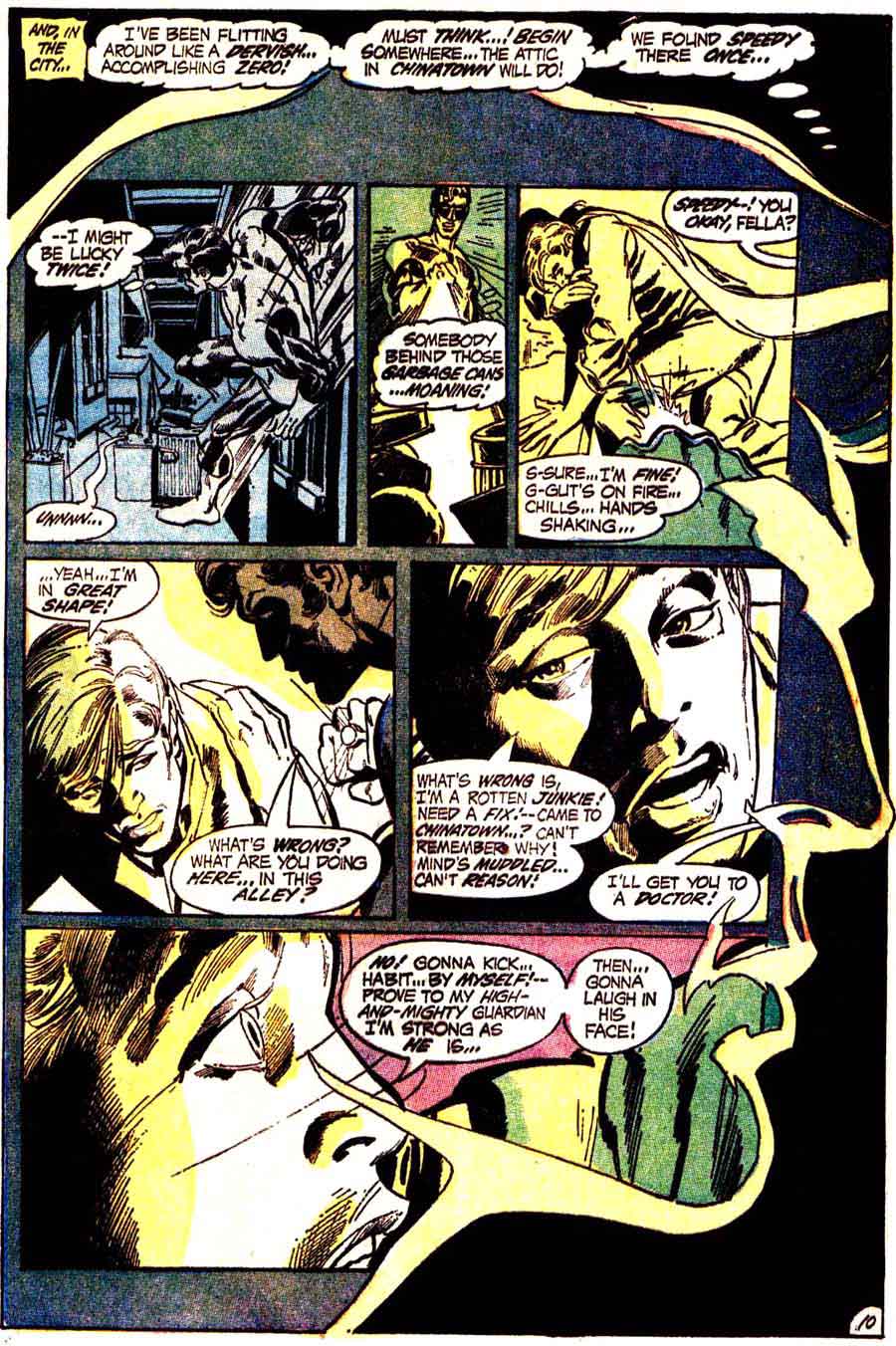 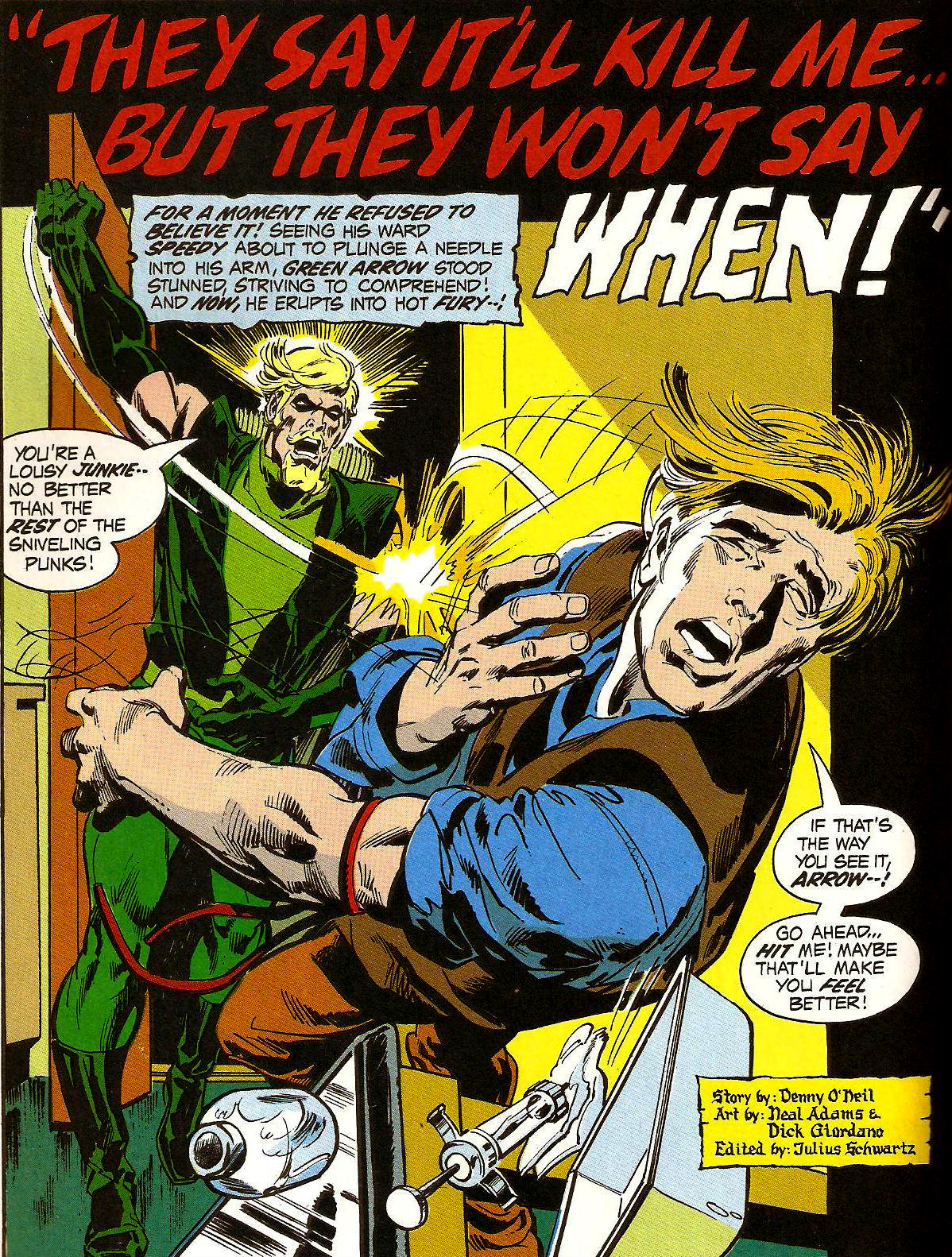 IMO Adams produces some of the best art of his career and O'Neil tells an entertaining story that is educational. Again I think this story is still valid today. My only quibble? The ending felt abrupt and almost like it wasn't what O'Neil had intended for the ending. Maybe editorial insisted on a different ending than O'Neil had originally? |
|
|
|
Post by rberman on Feb 20, 2019 14:22:53 GMT -5
 IMO Adams produces some of the best art of his career Especially that cover. It looks like he spent a long time on it. Powerful. What was the message from the mayor? |
|
|
|
Post by Chris on Feb 20, 2019 14:36:59 GMT -5
The ending felt abrupt and almost like it wasn't what O'Neil had intended for the ending. Maybe editorial insisted on a different ending than O'Neil had originally?From Back Issue #45 -  |
|
|
|
Post by Deleted on Feb 20, 2019 14:39:40 GMT -5
|
|
|
|
Post by tarkintino on Feb 20, 2019 15:11:07 GMT -5
One of the most unexpected and shocking covers of the Bronze Age. The faces of everyone--all in various stages of their own pain or depression--also seemed to be Grand Observers of the tragedy taking center stage on the cover. To me, it was an example of how Adams--already a master artist at other comic companies and commercial work--was elevating comic art with each year he spent at DC. His vision and inspiration in getting a message across was not rivalled by many before, during or since the zenith of his career. Its a rare achievement--the seamless blend of drama and story that feel natural. Superhero comics rapidly tried to jump of the "relevance train" in the wake of this landmark issue, but none ever came close to its cold, sober account of a familiar teen hero falling so far from his clean, smiling persona he had for so long. We saw the natural maturation of Dick Grayson as he attended college / away from Batman's shadow, and there was the specter of a life cut short in the case of Bucky Barnes, but this lifted the idea of a teen sidekick to a realistic level not really seen before. The added beauty of this story is--in all obviousness--that Green Arrow was the soapbox-stompin', liberal firebrand who was lightning quick to damn anyone who did not live by his prescription for a better world. His comeuppance here is not just being proven wrong, but that someone he pretty much raised subverted the value of that soapbox of judgement, when the world--if it lived by his rules ad philosophy--would turn into The Giant Peacenik Globe of Love and Harmony. As tragic as Roy's situation was, it was the necessary flood of frigid water to wake up the arrogant Green Arrow. Unlike many "event" or "special message" comics, Roy's troubles and the psychological side effects of both drug use and its effect on those around him were not dropped at the conclusion of this storyline--a major credit for DC in tightening and treating its "universe" like the real world, where life is not wrapped up in 30 pages. |
|
|
|
Post by rberman on Feb 20, 2019 15:26:09 GMT -5
The ending felt abrupt and almost like it wasn't what O'Neil had intended for the ending. Maybe editorial insisted on a different ending than O'Neil had originally?From Back Issue #45 -  There were other options besides "GA was right to slap an addict around" and "Speedy was right to get vengeance." Hopefully readers could see that these are flawed characters reacting in flawed ways that didn't necessarily "solve everything." But it's hard not to write a conclusive ending, and particularly a happy ending, for an American story. It makes me think of the 1980 film My Bodyguard in which new kid at school Chris Makepeace hires scary loner Adam Baldwin to protect him from bully Matt Dillon. But Dillon brings in an even bigger guy to beat up Baldwin. The message ought to be something about the futility of arms races. But then the ending involved the good guys winning a slugfest against the bad guys, as if the bad guys weren't going to come back with more muscle tomorrow. The film had an interesting premise but wrote itself into a corner. |
|
|
|
Post by Reptisaurus! on Feb 20, 2019 15:41:56 GMT -5
Yeah, it's incredibly far over the top, but that story worked well. It feels like a Kurtzman EC book to me... probably the first American comic that really captured that vibe since the comics code.
|
|
|
|
Post by Deleted on Feb 20, 2019 19:03:47 GMT -5
tarkintino thanks for your eloquent comments. They really captured how I felt about this 2 part story. Chris thanks for the explanation on the ending. That cleared up why the ending felt "added" or felt different from the rest of the story. Next issue will feature the first appearance of John Stewart.
|
|
|
|
Post by Deleted on Feb 23, 2019 14:55:13 GMT -5
 Green Lantern story by Denny O'Neil, Neal Adams and Dick Giordano. Green Arrow story by Elliot Maggin, Adams & Giordano. This issue featured the two leads in solo stories. GL: Hal's back up Guy Gardner (who first appeared in #59) is injured. The Guardians choose another back up for Hal. An unemployed architect John Stewart is chosen by the Guardians for Hal to train. Racist politician Jeremiah Clutcher is almost assassinated but Stewart figures out that the attack was faked. It was a plot to get Clutcher elected president. GA: A nice one page recap of Ollie's riches to rags story. GA is depressed feeling like he isn't making a difference as GA or Oliver Queen. However the mayor of Star City wants to retire from public office and wants Oliver to run for mayor. He struggles with the decision but after Green Arrow sees a young boy killed in a riot he decides that he might be able to do more for his city as its mayor.   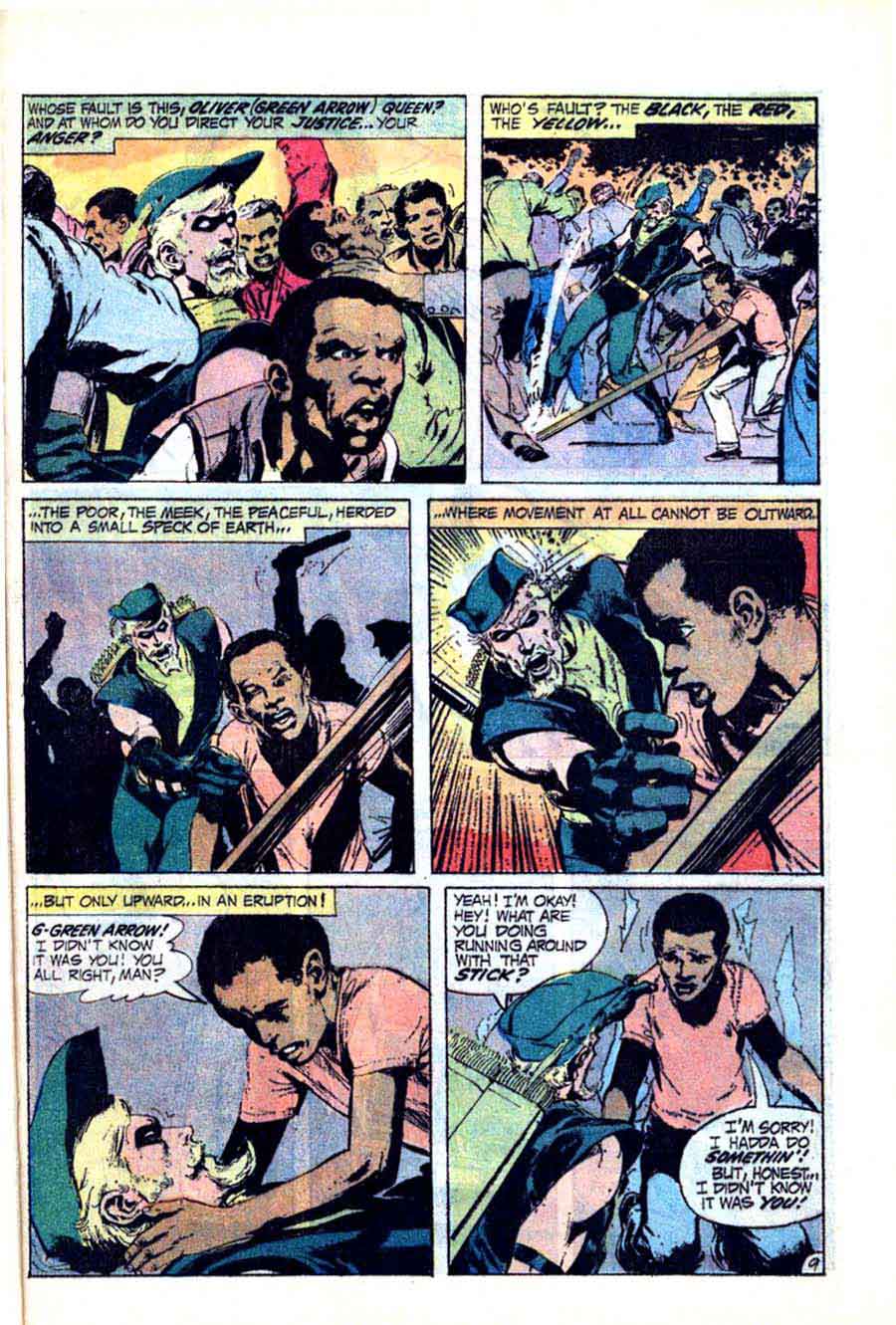 Thoughts: Thoughts: This version of Guy Gardner is NOT the current version made popular in the 80's as the abrasive jerk. Also this version of Stewart has been "toned down" today. He is not as hot headed and angry. He was also retconned to being a marine. I guess this story is a product of it's time but the stereotypical view of an angry young black man that O'Neil made Stewart was disappointing. I also felt Stewart really didn't "prove" himself by being a jerk to Hal and not telling Hal what was happening to make himself look good. In the GA story the soul searching by Ollie was well done by Maggin. I don't think this story was followed up on until later in the 70's when Ollie did run for mayor and lost. I also thought Adams' art was better on GA's story than the GL story. I believe this was Maggin's first story and it was an amazing debut IMO. I can see why Maggin became associated with the character through out the next decade. |
|
|
|
Post by Deleted on Feb 23, 2019 17:31:58 GMT -5
#88 was an all reprint issue.
#89 will be next...
|
|
|
|
Post by Deleted on Feb 26, 2019 19:24:42 GMT -5
 By O'Neil and Adams. Green Arrow, Green Lantern and Carol Ferris take a trip to the Ferris Aircraft plant in Abraham. Ferris Aircraft has been the target of ecological protester Isaac. However Isaac goes too far blowing up machinery which would have killed Carol. GL tries to take Isaac into custody, but GA stops him. Then GL & GA are captured by security and hung up on aircraft after an altercation that finds Isaac protesting by hanging himself in front of the airplanes to stop a test. By morning Isaac has died and Carol finds out about her drunken security force hanging up GL & GA. In a fit of rage GL trashes the aircraft with his ring. First of course is the biblical symbolism between Isaac and Jesus. And the crucifixion of Jesus and the two thieves with Isaac and the two heroes. It may have been a bit heavy handed but it gave the ending some emotional weight. I was impressed with O'Neil' script this issue as he gives balance to the arguments surrounding protecting the environment vs destroying people's jobs and the means used to protest. I also thought he showed growth in BOTH GL and GA as they can now see both sides of the argument.  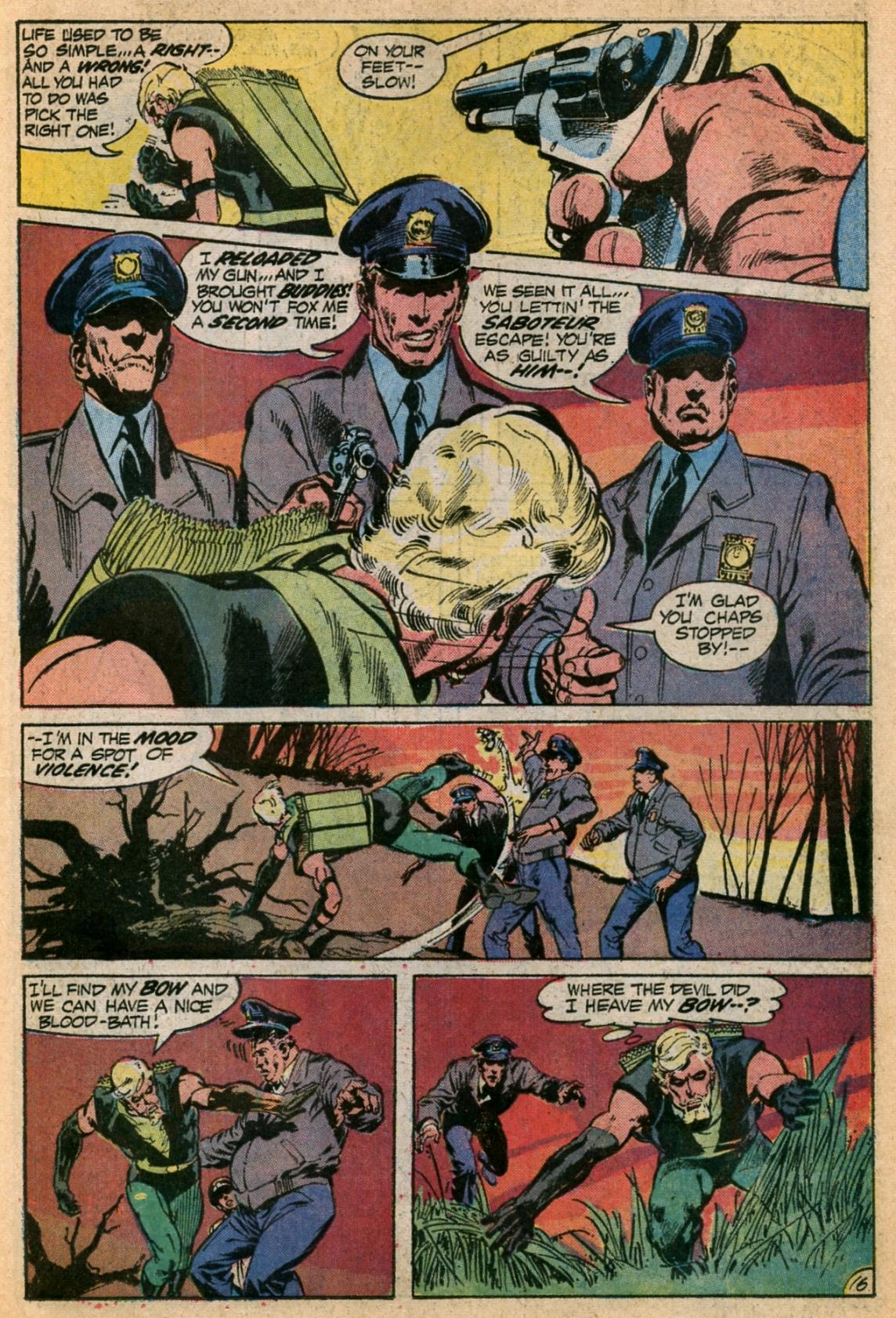 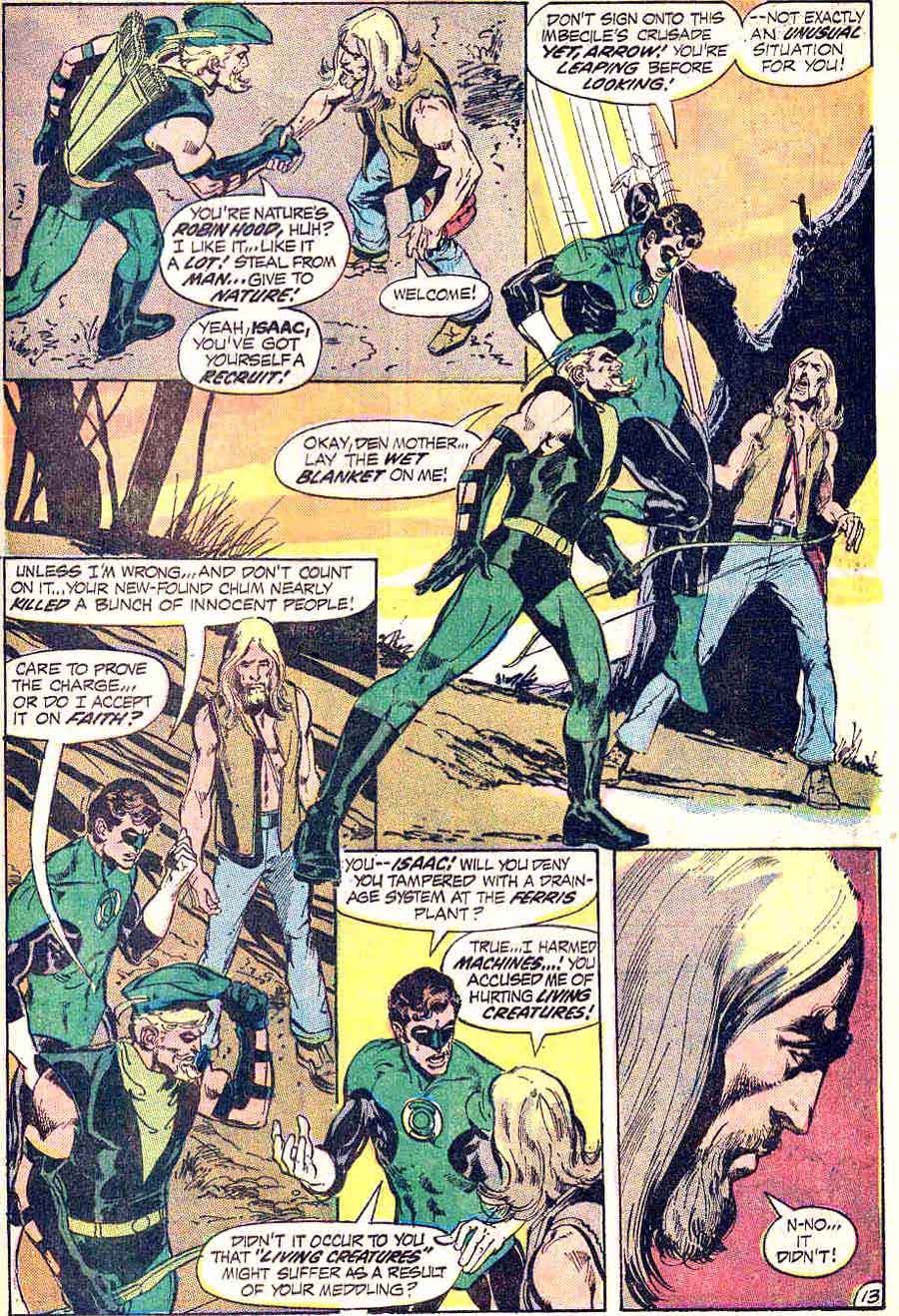 |
|